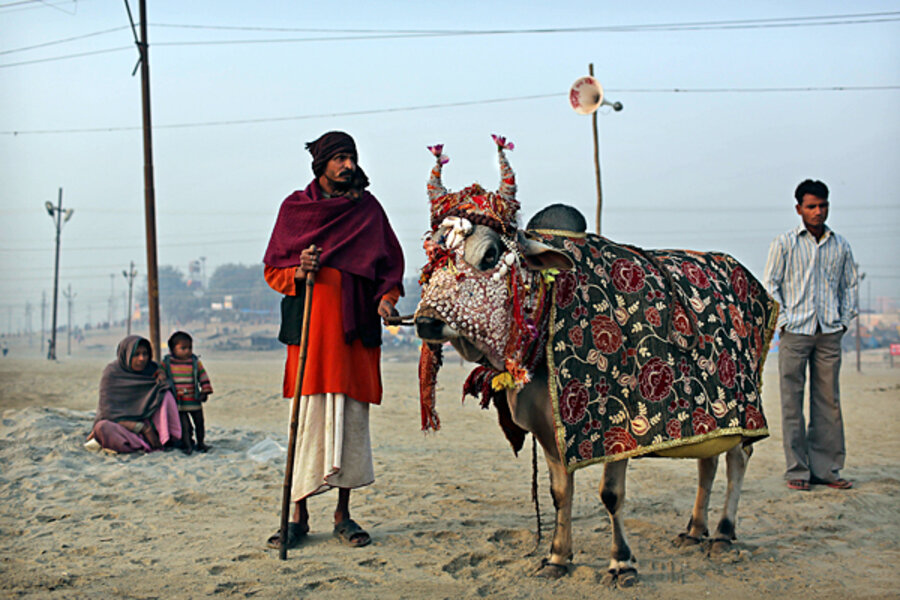Cow smuggling ... it's how Bangladesh gets its beef
Loading...
| Calcutta, India
In Muslim majority Bangladesh beef is in high demand.
More than 90 percent of the 160 million people who live there are Muslims and for them beef is a delicacy.
The country's meat producers estimate that slaughterhouses need up to 3 million cows every year to feed Bangladeshi appetites, and to help meet demand, Bangladesh is eyeing neighboring India. Cows are everywhere in India, but the cow is considered holy in the Hindu-majority country. In fact, slaughtering cows is banned in many Indian states, and New Delhi refuses to export them.
That refusal hasn't done much to deter the demand for beef in Bangladesh, however. In fact, say officials in Dhaka, beef has become so valuable it's spurred a dangerous cow smuggling trade across the India-Bangladesh border.
More than 2 million cows are smuggled from India to Bangladesh every year and most of the illegal trade takes place through the Indian border state of West Bengal, says Bimal Pramanik, an independent researcher in Calcutta, India.
“Bangladeshi slaughterhouses cannot source even 1 million cows from within the country. If Indian cows do not reach the Bangladeshi slaughterhouses, there will be a big crisis there,” says Mr. Pramanik, adding that 3 out of every 4 cows slaughtered in the country are from India.
“In this thriving trade, [herds of] cows worth 50 billion rupees [$920 million] are sent across to Bangladesh every year. It’s the sheer economics of the trade that drives the smuggling,” says Pramanik.
Cattle smugglers say they routinely bribe the police, customs, Border Security Force guards, and even some politicians in India to look the other way.
However, locals call this part of the border the “Wall of Death,” for the smuggling-related tensions that sometimes turn into violence. In 2012, security forces killed 48 Bangladeshis along the border, according to the Bangladeshi human rights group Ain o Salish Kendra.
But Bangladeshis say there is a simple way to end violence along the border.
"If India begins exporting cows to Bangladesh, such untoward incidents will stop," said the Bangladeshi Commerce Minister Golam Mohammad Quader. "We are really keen to import cows from India, and want all illegal activities involving cow trade across the border to end," he said.
The former head of India's Border Security Forces Utthan Kumar Bansal recently agreed:
“The menace of smuggling might be best controlled if the trade across the border is made legal. The legalization of export of cows could also help curb tension on the volatile border,” Mr. Bansal said.
Although Bansal’s comment did not trigger any government reaction in India, some right wing Hindu groups said they would never let India export cows to any country.
Radhakanta Saha, who is a World Hindu Organization leader and heads a volunteer group that aims to prevent cow smuggling in West Bengal, said: “The cow is our mother. We shall begin country-wide agitation if India decides to export cows to a country where they are likely to be slaughtered for ... meat.”







